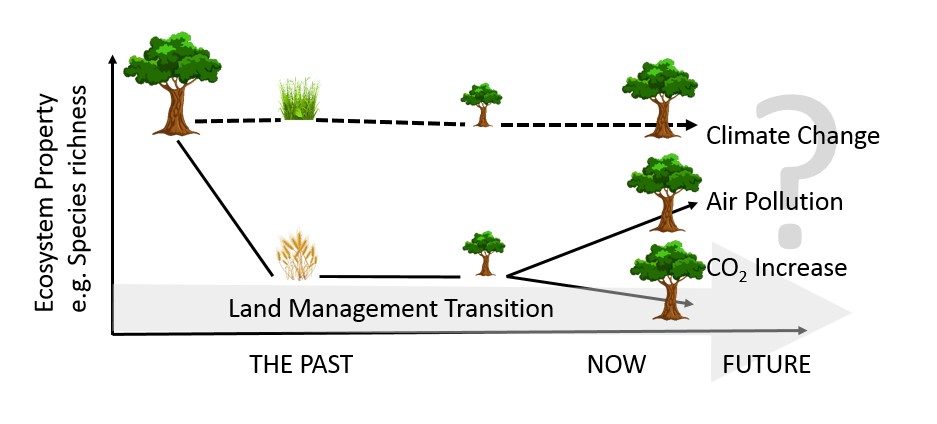Welcome
PASTFORWARD is a scientific research project focusing on herb layers in temperate forests and how their composition changes over time in response to global change. The project specifically investigates whether the history of a forest (e.g. recent forest planted on agricultural land versus ancient forest) determines the way herb layer communities respond to global change. On this webpage you can find more information about the project and its objectives, the methods that are being applied and its scientific output. Thanks for your interest and enjoy reading! The PASTFORWARD team



News
Synthesis paper published
09/12/2023 - A paper synthesising all data gathered during the PASTFORWARD project has been published in Global Change Biology. You can access the paper here. Enjoy reading!
Two UnderSCORE papers published
15/10/2022 - Recently, two PASTFORWARD-related papers have been published in Forest Ecology and Management. These papers present the outcome of a questionnaire, a review study and a decision support system developed within the frame of ERC Proof of Concept grant UnderScore. You can access the papers via the publications page on this website. Enjoy reading!
Introducing our prototype decision support system: UnderSCORE
25/11/2020 - Last year, we received funding from the ERC for a Proof of Concept grant. Now, we gladly present the working Decision Support System (DSS) prototype UnderSCORE. Haben recently recorded a talk on UnderSCORE, which you can watch in the video below. The tool, and more information, can be found on the UnderSCORE DSS page.
Double interview for Horizon Magazine
01/10/2020 - Prof. Kris Verheyen and Prof. Pieter De Frenne gave a double interview for Horizon Magazine on PASTFORWARD and FORMICA projects. They explain that forest understorey species and the balance among the tree species that tower above them, are all threatened by decades of accumulated nitrogen pollution. A study has found that the darkness of the forest has subdued the effects of nitrogen. But forests are destined to let in more light in the future as trees succumb to drought and disease. Read the full article here.
Three PF PhD’s have graduated
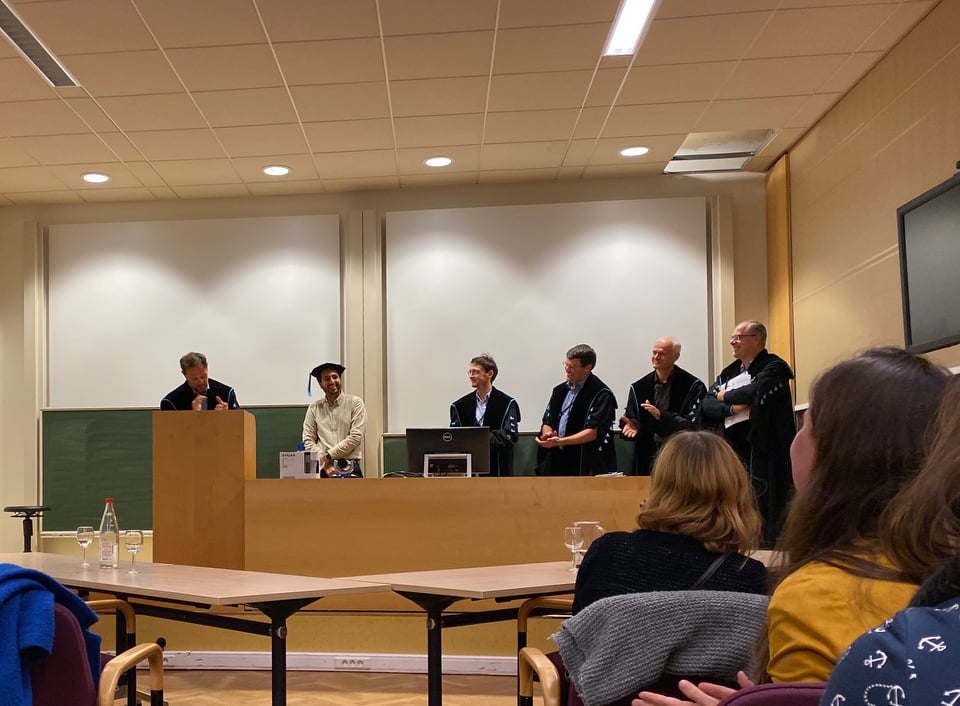
22/06/2020 - During the past year, Haben, Leen and Emiel defended their PhD dissertations. In addition, multiple papers on the different chapters included in their thesis were published, which can be found on the publications page of this website.
Keynote talk at the Gfö 2019
10/09/2019 - Prof. Kris Verheyen gave a keynote talk titled “The forest herb layer – More than a step-over” at the Gfö 2019 conference in Munster, Germany. In his presentation, he gave an comprehensive overview of the main findings from both the observational and experimental studies from the PASTFORWARD project and the different add-on projects.
ERC Proof of Concepts grant: UnderSCORE
25/05/2019 - In May 2019, we received funding from the ERC for a Proof of Concept grant: UnderSCORE. In this project, we will investigate whether strategic decision makers across Europe need a web-based decision support system to score forest understorey dynamics in response to management interventions in a changing world. If so, we will also consider how to deliver it. We aim to understand the concerns and opportunities perceived by strategic-level decision makers for forests across Europe, through targeted distribution of a wide-ranging questionnaire. We will then use response information, together with the data we have gathered from the ERC Consolidator Grant PASTFORWARD, to tailor a prototype of the UnderSCORE decision support tool, investigating how this can best be delivered to those who need it.
Quantifying the functional role of the understorey in temperate forests
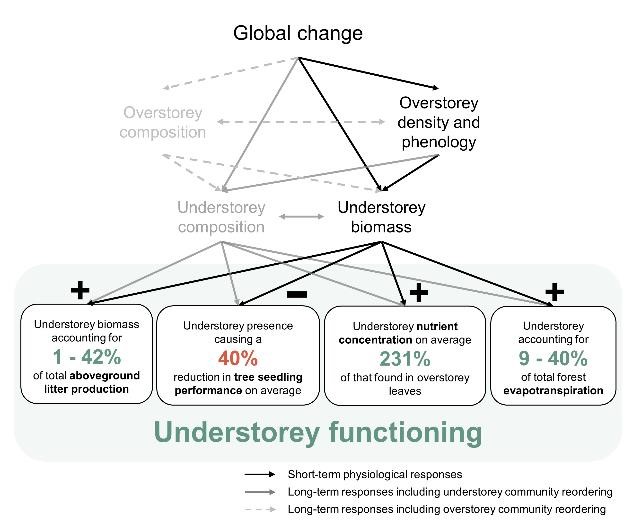
13/07/2019 - The importance of the understorey for temperate forest functioning has often been taken for granted, while studies that quantify this importance were scarce. In this recently published paper, Dries, Kris and co-authors reviewed studies that jointly assessed overstorey and understorey functioning and used the reported data to quantify the relative importance of the understorey, focussing on the understorey's role in aboveground litter production, tree regeneration, nutrient cycling and evapotranspiration. Although the understorey's contribution to temperate forest functioning was found to be highly variable, this study also showed that the understorey's contribution is definitely not negligable, advocating for the inclusion of understorey communities in studies focussing on temperate forest functioning
New paper on tree seedling response to overstorey and understorey
21/06/2019 - Emiel and co-authors used the regional Flemish Forest Inventories to study how changes in the abundance of the overstorey and understorey influence tree regeneration. They found that the shade-casting ability of the overstorey and competitiveness of the understorey were more important in determining tree regeneration, especially probability of presence, than the abundance of these layers per se. In predictions mimicking several thinning scenarios they found that in the poor forests, reducing overstorey abundance could lead to an increase in seedling cover, whereas in rich forests, the opposite is true and seedling cover will potentially be reduced. These findings can be used to guide forest management decisions in order to attain successful forest regeneration in temperate forests.
New PF paper on quantifying land-use history effects
12/05/2019 - In this paper, Leen and co-authors present a framework for quantifying the effect of past land use on ecological patterns and processes and enhancing our understanding of ecosystem dynamics by including legacy effects which have often been ignored. They illustrate the application of the framework through a case study on the importance of past light levels for the contemporary understorey composition of temperate deciduous forest. They found that the understorey shows legacies of past forest management.
New PF paper on interactions between past land use and recent forest management
23/04/2019 - Past agricultural land use and forest management have shaped and influenced the understorey composition in European forests for centuries. In this study, Leen and co-authors found that understorey vegetation assemblages are affected by (a) legacies from a historical infield/outland agricultural system (i.e., a system with nutrient-enriched vs nutrient-depleted areas), (b) recent management intensity (i.e., thinning/felling activities), and (c) the interaction of recent management and potential legacies. the study demonstrates that careful consideration of both the long-term land-use history and the more recent disturbances due to forest management are necessary when making future predictions of understorey composition and diversity.
First PF Phd has graduated!
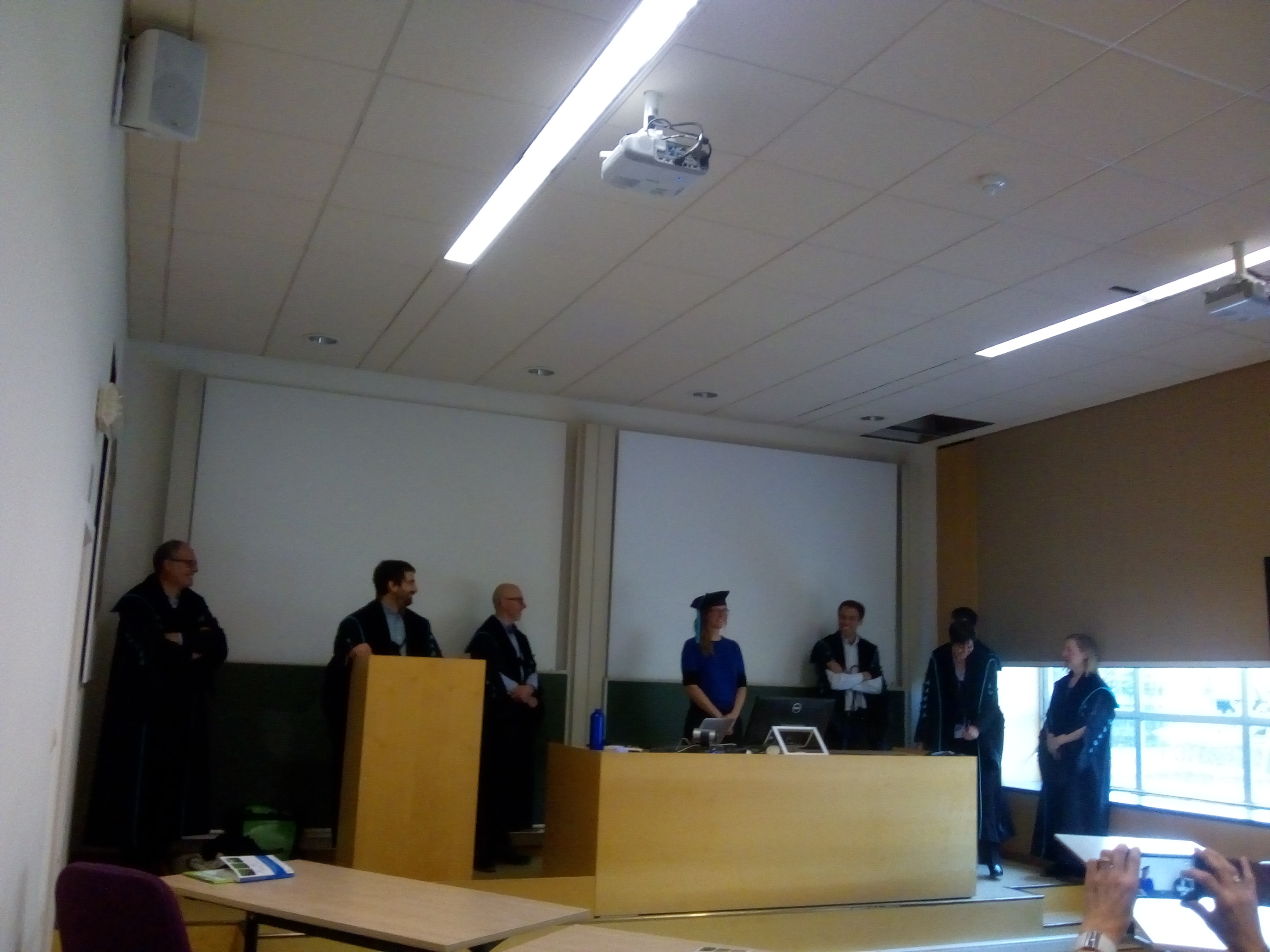
26/03/2019 - Sybryn Maes is the first PASTFORWARD PhD student to graduate as doctor of Applied Biological Sciences: Forest and Nature Management. In her thesis, she studied the combined effects of the main globalchange drivers (climate, nitrogen deposition, and land-use change) on three components of forest ecosystem dynamics: topsoil properties, tree growth, and understorey community traits.
New PF paper in Forest Ecology and Management
15/02/2019 - In this study, Sybryn Maes and co-authors assessed simultaneous effects of canopy composition (through the litter quality), land-use history (past land cover and past forest management), atmospheric deposition, and the parent material on topsoil conditions in European temperate forests. They found that higher litter quality resulted in soils with a higher proportion of exchangeable base cations and total phosphorus, but lower C/N-ratios and litter mass. The litter quality effects on the topsoil did not depend on the nitrogen deposition levels or the parent material, but did depend on the previous land cover for topsoil phosphorus concentrations. This suggests that the land-use history of a forest should be considered when evaluating litter quality effects on topsoils. Overall, this study demonstrates that forest managers could use the canopy composition as an important tool for influencing topsoil conditions, although parent material remains an important factor to consider.
PASTFORWARD presentations at the annual BES conference in Birmingham
16/12/2018 - The PASTFORWARD team was well represented at the BES Annual Meeting 2018 in Birmingham. Dries, Haben and Emiel gave oral presentations on "Drivers of understorey biomass and nutrient stocks in temperate forests across Europe", "Functional traits dictate soil nitrogen (N) uptake by plants in response to land-use legacies and environmental change" and "Significance of the over- and understorey for tree regeneration".
PASTFORWARD presentations at Cambridge & Leipzig
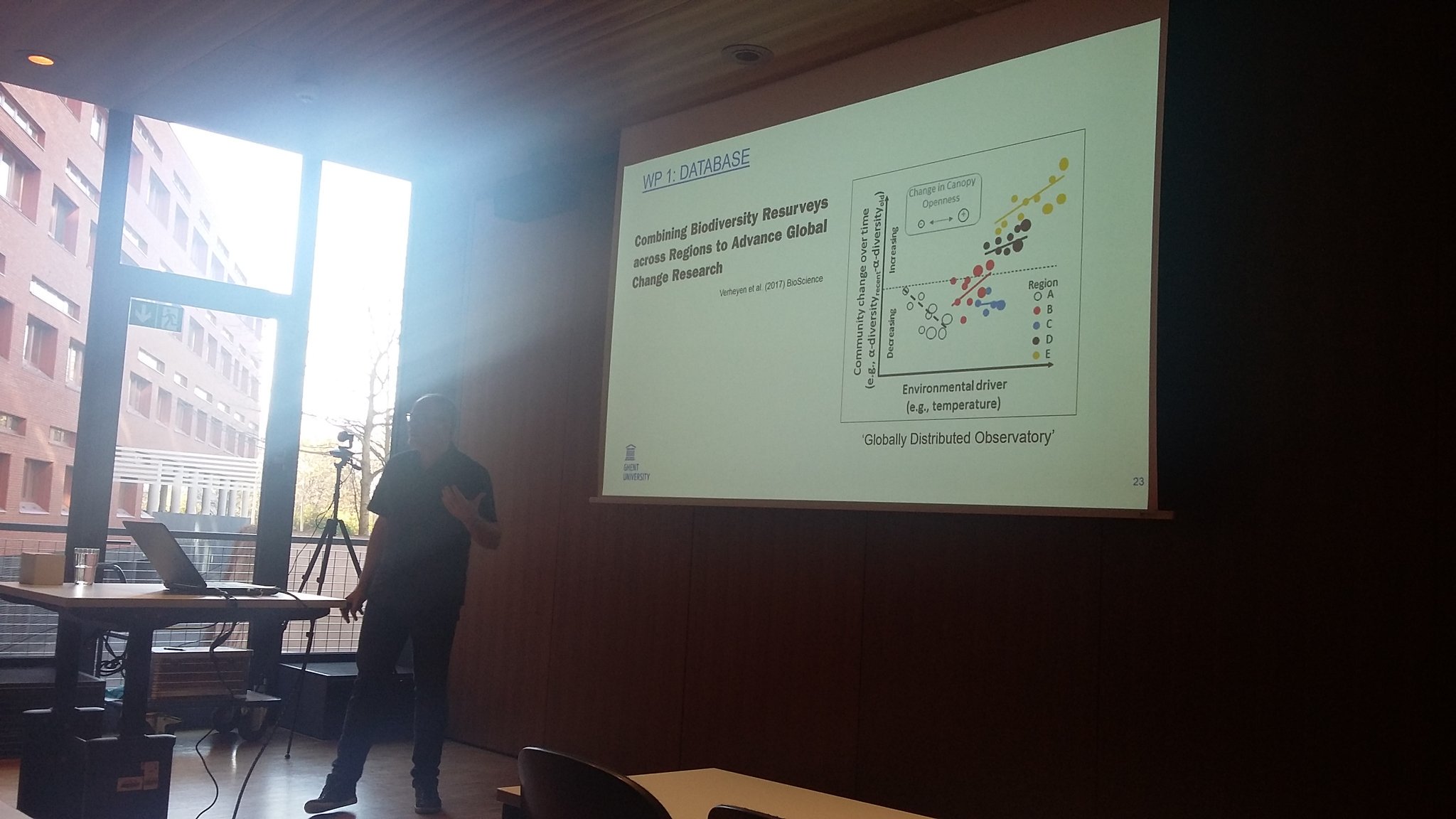
14/11/2018 - Prof. Kris Verheyen presented at Cambridge University and at the iDiv seminar in Leipzig in November. He talked about approaches to assess the effects of interacting global change drivers on forest composition and function, presenting PASTFORWARD research and highlighting results from studies using the forestREplot database.
New PASTFORWARD paper in GCB
22/10/2018 - The growth of tree species in European forests may change with future environmental changes, so understanding how environmental drivers shape tree growth is essential to correctly predict future tree growth. In this study, the authors showed that past forest management can modulate the effects of changing temperatures on growth of Quercus: trees in plots with a history of coppicing responded stronger to temperature than in plots where no coppicing had occurred. Overall, this study highlights how tree growth can be interactive affected by environmental drivers, including forest management, and therefore demonstrates the importance of considering multiple drivers when predicting future tree growth.
New PF paper on agricultural legacies in forest soils
19/10/2018 - Agricultural legacies in forests seem to vary between sites and regions, but can be explained by gradients of inherent soil properties, nitrogen deposition and regional phosphorus nutrient management. Haben Blondeel and colleagues present this conclusion based on a single investigation along these gradients. They analysed soil from 24 paired post-agricultural and ancient forests collected in eight European regions, which they analysed on pH, carbon (C) , nitrogen (N), phosphorus (P) and base cations. They observed overall higher P-concentrations, higher pH and lower C/N ratio in post-agricultural forests compared to ancient forests. Crucially, they found that the magnitude of these legacies was affected by gradients of soil characteristics, P nutrient management and N deposition.
New PASTFORWARD publication on N deposition
14/08/2018 - New research led by ForNaLab / PASTFORWARD and contributed to by a team of international scientists, just published in Environmental Pollution, investigates how and why forest understorey responses to nitrogen (N) deposition are context dependent. Mike Perring and co-authors suggest that community responses over time to N deposition are context dependent, especially due to where plots are located along light and fertility gradients, and because of past land management history. The results of this study have important implications for how Europe-wide critical loads are set for forest understorey communities, how conservation and restoration of understorey communities is approached, and for reconciling apparently divergent forest understorey community responses to N deposition
Latsis symposium on forest restoration
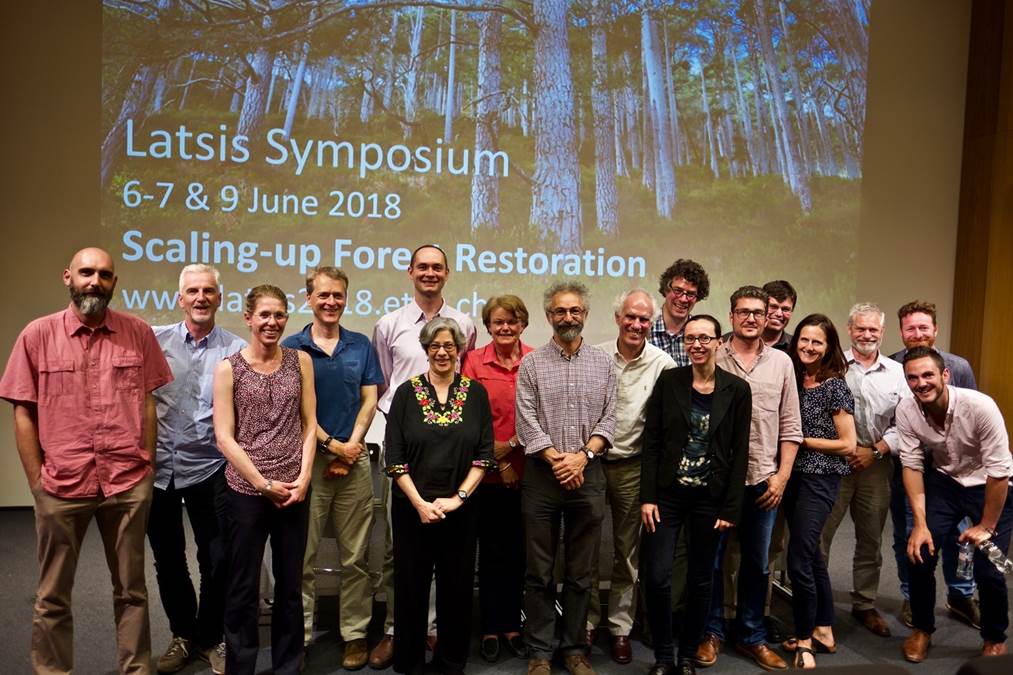
06/06/2018 - On6th and 7th June, Mike Perring attended the Latsis Symposium on Scaling up Forest Restoration at ETH Zurich. In his invited talk, he discussed the wider implications of the past for ecological restoration. He illustrated his talk by referring to PASTFORWARD work on forest understoreys, emphasizing that restoring forests is about more than planting trees. The symposium as a whole featured a variety of international speakers with contributions that reflected natural and social science research foci, and perspectives from policy makers and industry. Together, the speakers highlighted the interdisciplinary approach that will need to be adopted to tackle the challenges associated with scaling up restoration. They also emphasized the social and ecological opportunities that arise from successfully meeting these challenges. (picture by Eric Higgs | (c) all rights reserved)
Another PASTFORWARD publication!
20/03/2018 - In this new publication, Mike Perring and others demonstrate how plant community responses to environmental changes, such as nitrogen deposition and increasing temperatures, depends upon historic land management legacies. Using data from ~2000 plots surveyed at two time points across temperate forests in Europe, they show that trajectories in key understorey community properties are influenced by contemporary change and historical management. We observe increases in species richness/plant height with increasing nitrogen in less-intensively managed high forests from 1800 but declines in former coppice forests. These findings can reconcile contradictory literature on community change, and suggest that anticipating future responses to environmental change requires an appreciation of the legacies of past disturbance.
New paper on understorey modelling
15/02/2018 - Forest modelling studies often ignore understorey vegetation while predicting the dynamics of temperate forests. Although some models exist that aim to include the understorey as well, attempts are scarce and often consider only one or two variables as drivers of understorey growth. In this paper, published in Perspectives in Plant Ecology, Evolution and Systematics, we provide an overview of existing understorey models, evaluate them in terms of the processes they account for, and suggest a way forward towards a new generation of understorey models that can more accurately predict the composition and functioning of the understorey through time.
PASTFORWARD teaches high school!
06/02/2018 - Haben, Sybryn and Leen stood in front of the classroom! They taught the 5th year high school students of the VABI in Roeselare about ancient forests, their importance and the reasons why they are under threat. They also provided playful workshops where the students could learn more about different forest types, tree ring measurements, and methods to explore the history of forests in their own neighbourhood. This was an excellent opportunity for the PASTFORWARD-team to communicate about their project to a non-scientific audience, and to increase young students' interest in forest and nature management!
New PASTFORWARD publication online
31/10/2017 - In this article published in Dendrochronologia, we compared three methods to measure ring-widths on tree cores in terms of a number of quantitative and qualitative criteria. We assessed their differences for a ring-porous (Quercus robur) and a diffuse-porous (Fagus sylvatica) tree species, and evaluated whether growth release detection, an analysis which can be used to reconstruct forest disturbances, leaded to similar results when different ring-width measurement methods were used. Growth releases were consistent among methods despite small, but significant differences in ring-width values. This study stresses the importance of taking into account a study's ultimate objective (e.g. growth release detection versus accurate ring-width measurements) when selecting among alternative ring-width measurement methods.
Forest dynamics under climate change
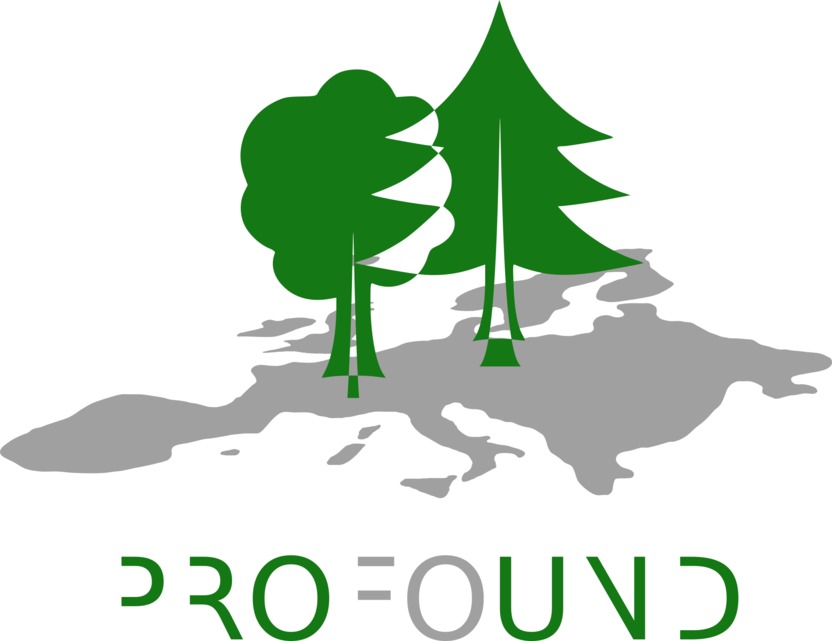
09/10/2017 - This week, Dries attended the final meeting of PROFOUND in Potsdam, Germany. PROFOUND is a COST action with the aim to stimulate international collaboration on modelling forest dynamics under climate change. A broad range of forest dynamic models, soil models, inter-model comparisons, calibration tools and databases were presented. The attendants’ recommendations for further research included, among others, the use of more complex soil models and the use of tree ring data for model calibration and validation. Also investing in model documentation to increase transparency in terms of the processes accounted for, was stressed several times. The importance of the understorey, however, was rarely mentioned. Only in Boreal forest modelling studies, understoreys are being taken into account as an essential component of the forest’s carbon cycle. Hence, convincing forest dynamic modellers that understoreys can play a significant role in determining forest dynamics and functioning will be an important future challenge.
On the quantification of land use legacies
12/9/2017 - From 12 to 14 September, the 3rd Restoring Forest Conference: Regeneration and Ecosystem Function for The Future (IUFRO) took place in Lund, Sweden. During the first session ‘Learning from the past’, Leen presented her work on quantifying the effects of land-use history on ecosystem dynamics, describing a framework, based on Markov-chain modelling, to account for the effects of past land use on current ecosystem properties and processes. By applying the framework on a case study, Leen found that past fluctuations in light levels in forests, caused by past management interventions, may still have an impact on the present-day forest herb layer community composition.
Global change and tree growth
6/9/2017 - From 6 to 10 september, the EuroDendro conference took place in Tartu, Estonia. This international conference, being a meeting point for the (European) tree-ring scientific community, addressed diverse topics related to dendroclimatology, dendroecology and dendroarchaeology. Sybryn presented her study on the interactive effects of global change on individual tree growth, based on tree-ring data gathered across Europe (see also the project's work package II). She found that global change promotes tree growth across Europe. However, antagonistic effects among global change drivers were identified as well: increased precipitation might temper the positive effects of nitrogen deposition on tree growth, findings that will be further analysed in the coming months.

N-tracing results presented at BIOGEOMON 2017
20/8/2017 - To learn more about nutrient uptake and competitive interactions on recent versus ancient forest soils, Elyn and Haben conducted an N-tracing experiment in the PASTFORWARD mesocosms. Preliminary results show that ancient forest species take up less nitrogen and that nitrogen uptake increases when light availability and temperature increases. Interestingly, also past land use seems to have an effect on nutrient uptake. This week, Elyn presented these preliminary results at the BIOGEOMON conference, which took place in Litomyšl, Czech Republic.
Tree regeneration experiment

1/7/2017 - During spring, Emiel has installed a new experiment using the PASTFORWARD mesocosms as model communities. For this new experiment, three different tree species were sown and planted in each mesocosm to see how their establishment and growth is affected by herb layer composition under the different experimental treatments. In addition, eight new plots were set up to study the growth of these tree species in the absence of a competing understorey community. The experiment will allow us to analyse how understorey composition, global change and past land use affects tree regeneration.
PASTFORWARD seminars in Ghent
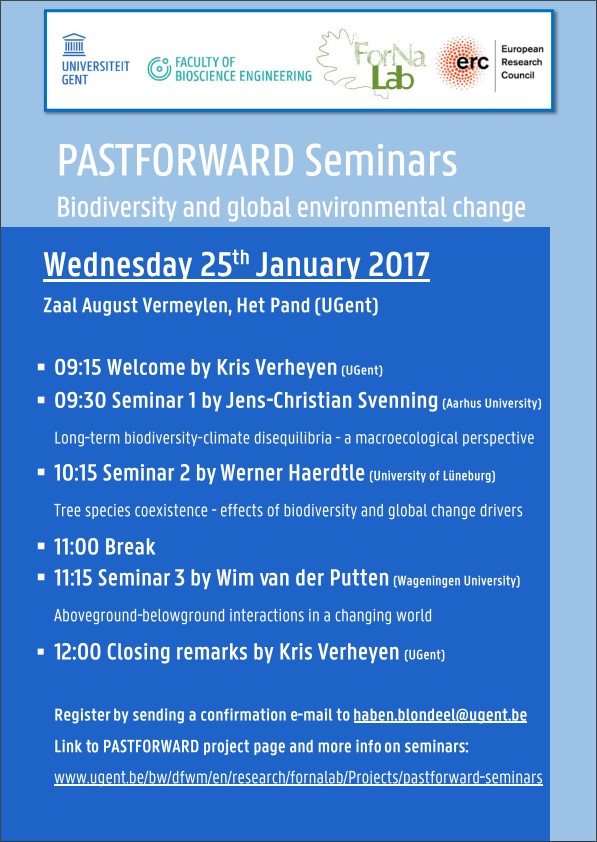
25/1/2017 - On Wednesday the 25th of January, the PASTFORWARD team organised a public seminar in Ghent. Werner Härdtle (University of Luneburg, DE), Wim van der Putten (NIOO, NL) and Jens-Chrsitian Svenning (Aarhus University, DK), professors in basic and applied ecology, presented their work on the impact of global change on ecosystem functioning.
Mid-term review
23/1/2017 - From Monday the 23th until Wednesday the 25th of January, we organised a three-day mid-term review event to evaluate the work that has been conducted during the project’s first two years and to brainstorm about opportunities and ideas for the future. We invited three international researchers at our lab building in Gontrode, resulting in interesting discussions on experimental setups, preliminary findings, future plans and ways to disseminate scientific results. Many thanks to Werner Härdlte (University of Luneburg, DE), Wim van der Putten (NIOO, NL) and Jens-Christian Svenning (Aarhus University, DK) for their valuable input.
Internship student joins the team
17/1/2017 - Gabriele Midolo (a Masters student from Wageningen University, NL) has joined the lab as an intern, until mid-May. He will predominantly work in Work Package I, analysing herb layer community dynamics, as estimated by functional group as well as individual species, using the land management database created as part of Work Package I and estimates of global environmental change, together with forest resurvey records from forestREplot. While at the lab, he will also gain experience with other aspects of the PASTFORWARD project e.g. Work Package III, and participate in other projects at ForNaLab.
New PASTFORWARD publication online
21/12/2016 - In this article, published in BioScience, we advocate combining resurvey data from multiple regions, spanning large environmental gradients, as a promising tool to answer a broad range of ecological questions (similar to the approach applied in work package II). The article provides general guidelines to aid the implementation of multiregion resurvey databases. With this article, we aim to encourage resurvey database development across other community types and biomes to advance global environmental change research.
A dark day in the forest
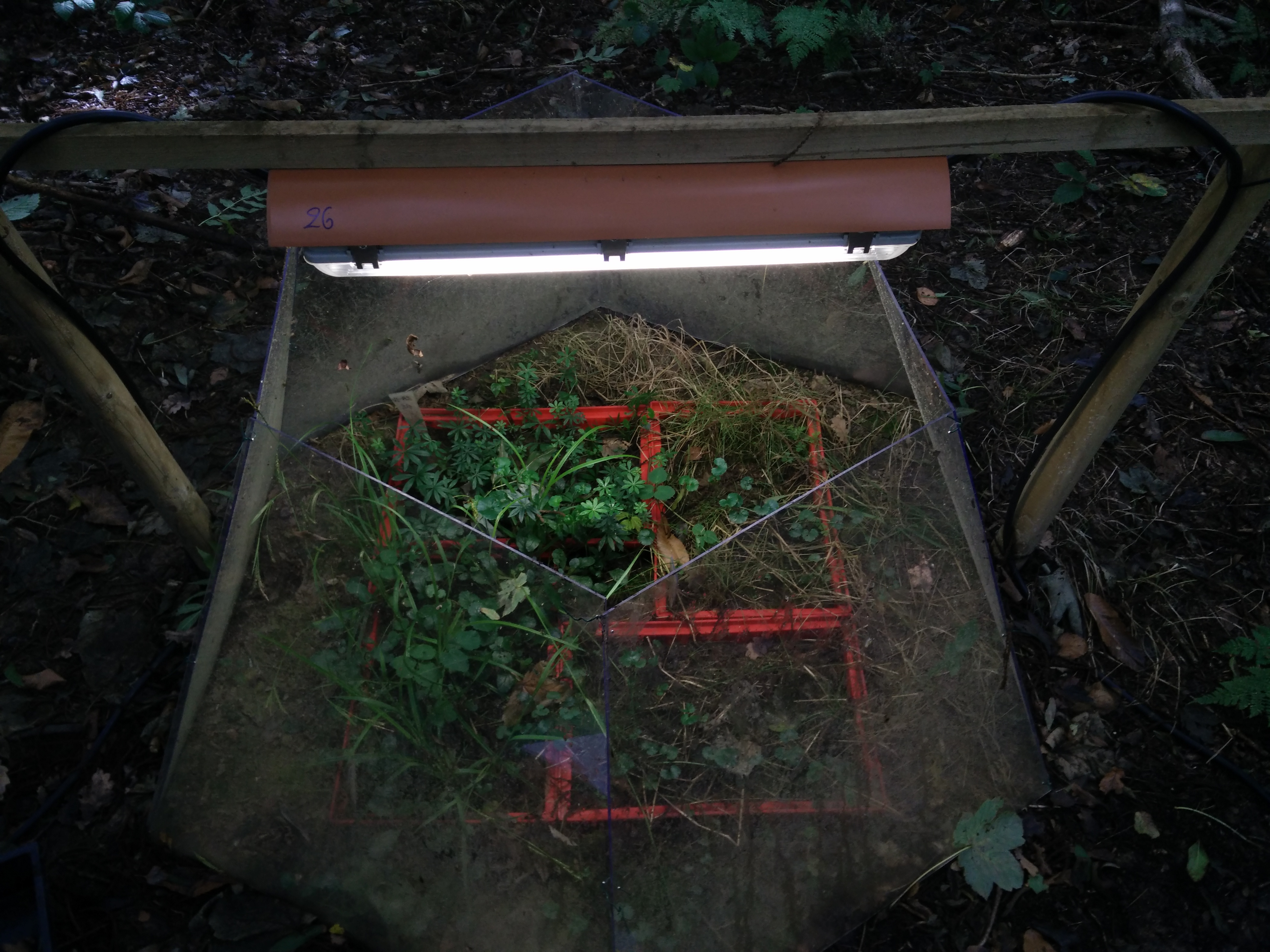
3/10/2016 - Almost noon on a dark day in the forest… Luckily, these communities can benefit from the extra light!
Experiment up and running
1/4/2016 - Thanks to many helping hands of our lab and a splendid coordination by Haben, the PASTFORWARD mesocosm experiment has been set up! This experiment will allow us to investigate the impact of past land use and global change on understorey community composition. Thanks to a well thought out design, also two-way and three-way interactions among global change drivers can be investigated. For those interested in numbers: 7680 individual plants, planted in 384 trays, filled with 48 different types of soil, collected in 8 regions across Europe, currently being exposed to 8 different global change treatments...
Successful second field campaign
26/6/2016 - The large field campaign of Sybryn and Leen has been completed! The team visited another 63 forest plots, again stretching from Western Europe (Wales) to Eastern Europe (Bialowieza in Poland). It was again an adventurous trip with some nice encounters (bison, pine marten, red-breasted flycatcher, moose), and some beautiful and unique forest plots (of which some were situated on a desert island in a lake in Latvia).
PASTFORWARD researchers in the news
 8/6/2016 - The PastForward team is now doing an intensive series of fieldwork throughout Europe and they were spotted by the local press in Germany!
The team is investigating the interactive effects of land-use change, atmospheric deposition and climate warming on forest herb layer communities.
Read the article published in one of the German papers here!
8/6/2016 - The PastForward team is now doing an intensive series of fieldwork throughout Europe and they were spotted by the local press in Germany!
The team is investigating the interactive effects of land-use change, atmospheric deposition and climate warming on forest herb layer communities.
Read the article published in one of the German papers here!
Internship student joins the team
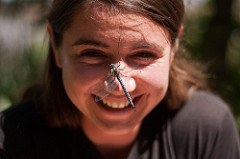 01/05/2016 - Abbe Hamilton, a master student at Penn State University (USA), joins the team for three months. Abbe will support the upcoming fieldwork in Wales, the Netherlands, Germany, Latvia and Poland.
01/05/2016 - Abbe Hamilton, a master student at Penn State University (USA), joins the team for three months. Abbe will support the upcoming fieldwork in Wales, the Netherlands, Germany, Latvia and Poland.
New PASTFORWARD publication online
9/2/2016 - In this PASTFORWARD paper, published in Global Change Biology, Mike details why we expect land use legacies to interact with contemporary environmental changes in determining changes in ecosystem properties. By reviewing the current literature on this matter, he shows that the effect of land use legacies has been frequently overlooked. The paper additionally suggests ways to address this gap in future research, including experimental studies and modelling.
